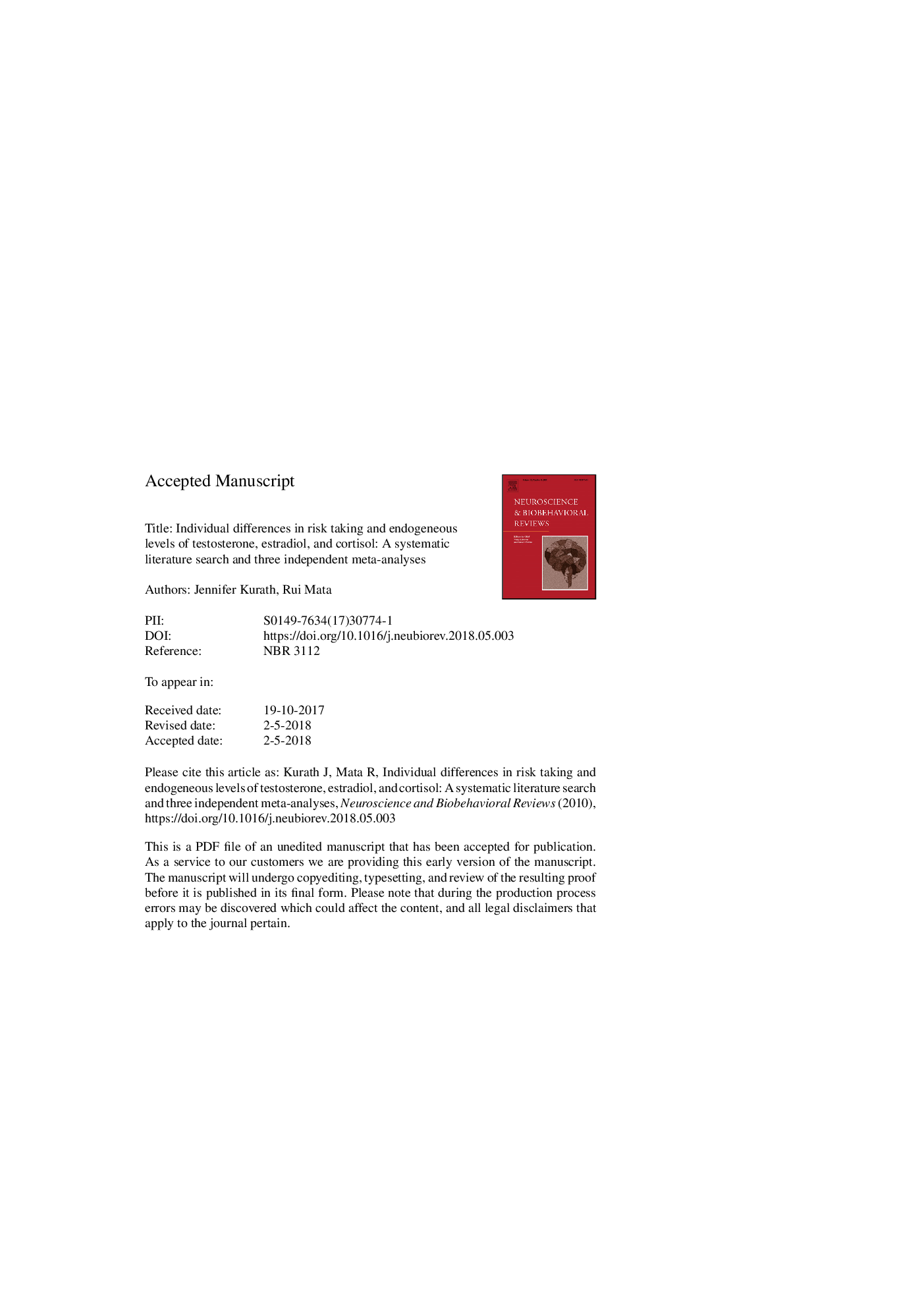| Article ID | Journal | Published Year | Pages | File Type |
|---|---|---|---|---|
| 7301965 | Neuroscience & Biobehavioral Reviews | 2018 | 70 Pages |
Abstract
Hormonal levels have been hypothesized to serve as proximal biological mechanisms underlying individual differences in risk taking. We conducted a systematic literature search and independent meta-analyses to assess the link between endogenous testosterone, estradiol, and cortisol levels and risk-taking related constructs (i.e., risk-taking propensity, impulsivity, sensation seeking, novelty seeking). We found small correlations between risk-taking constructs and testosterone (râ¯=â¯0.12, 95% CIâ¯=â¯0.08, 0.16, 108 effect sizes, kâ¯=â¯49, Nâ¯=â¯9112) as well as estradiol (râ¯=â¯0.10, 95% CIâ¯=â¯0.02, 0.18, 48 effect sizes, kâ¯=â¯17, Nâ¯=â¯2900), but not cortisol (râ¯=â¯â0.01, 95% CIâ¯=â¯â0.11, 0.09, 60 effect sizes, kâ¯=â¯27, Nâ¯=â¯3880). Overall, these results suggest a biological foundation for individual differences in risk taking. We point out some limitations of past studies and make recommendations for future work investigating the hormonal basis of individual differences in risk taking.
Keywords
Related Topics
Life Sciences
Neuroscience
Behavioral Neuroscience
Authors
Jennifer Kurath, Rui Mata,
